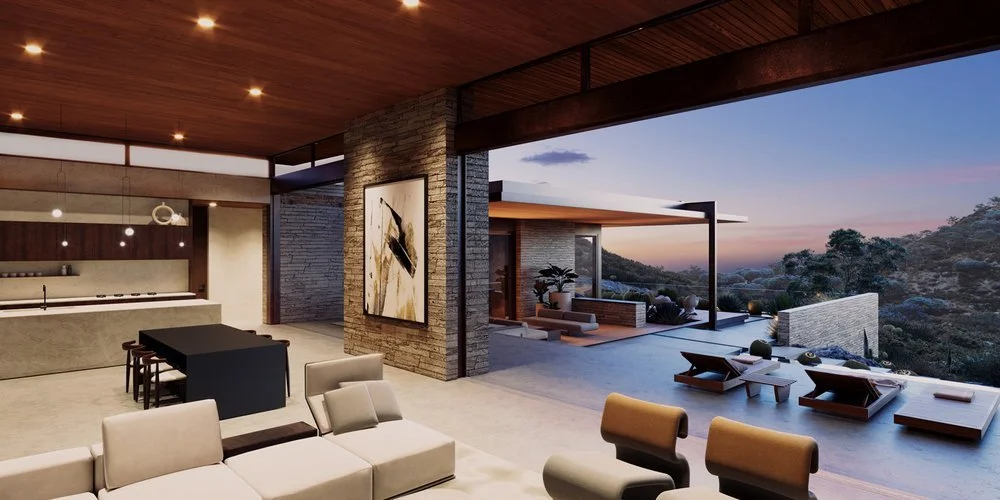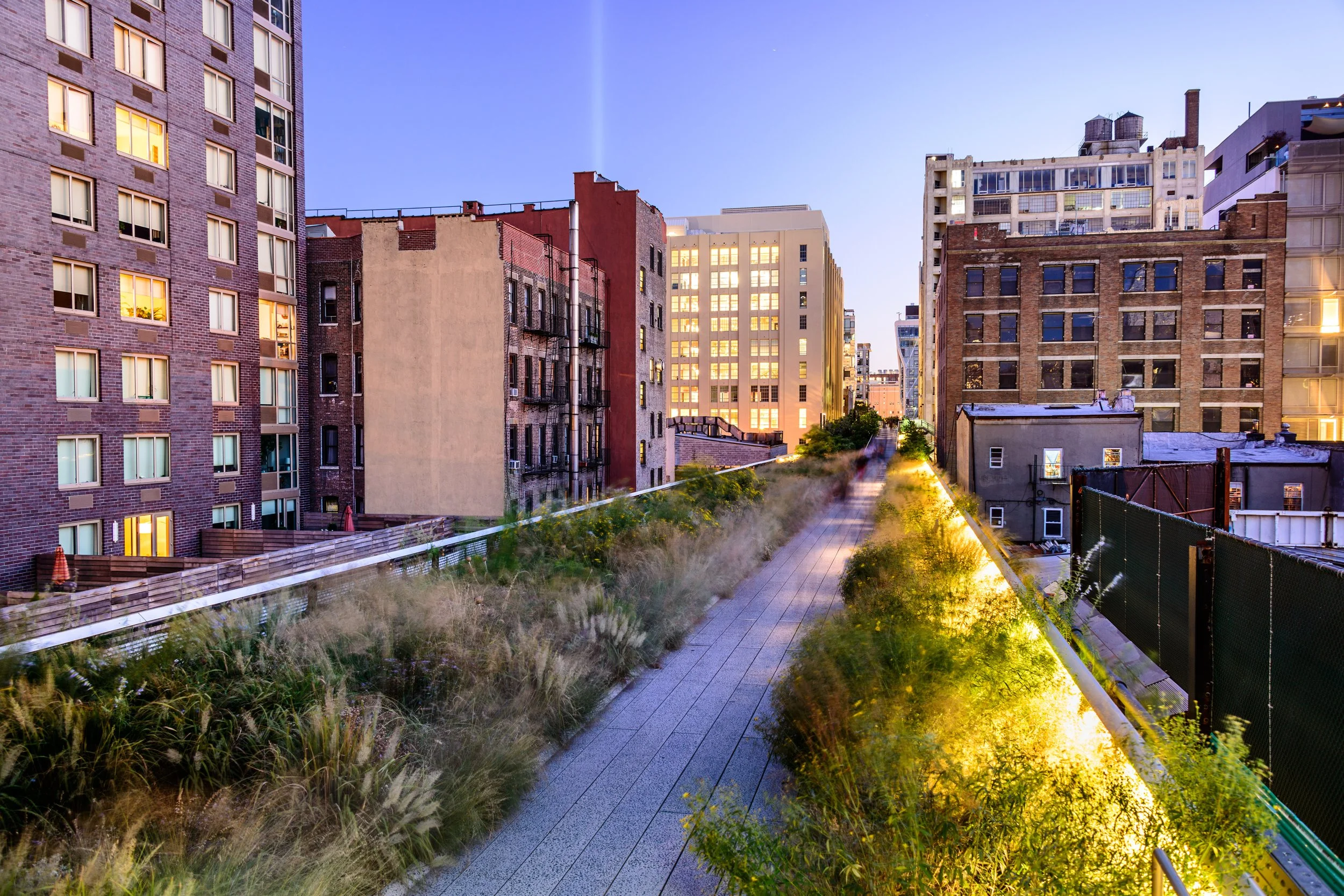How The Advent of Capitalism Affected the Form of the City
A slow yet palatable transition within the city started around the sixteenth century and continues today. The forces of religion that had driven the city started to contend with a new stimulus based on money and profits. The mercantilist and capitalistic philosophies began manifesting in the city's physical form. The town was still firmly rooted in its medieval customs and structures; however, it was clear that things were changing throughout the Western world. Many cities such as Venice, Amsterdam, Florence, the Gothic Quarter in Barcelona, and others preserved their historical character; however, many allowed the forces of this emerging value set to change the identity of their city forever.
Capitalistic forces favored the expansion of the city outwards. The new economy favored speculation and calculated risk. Just as religion postponed pleasure for future rewards, the capitalist ideal offered a similar promise but with a different end: limitless accumulation of financial resources. People were very familiar with this concept; however, it was confined to a more narrow, almost isolated obsession: money.
Previously, the church was the city's prime recipient and controller of financial accumulation. Slowly, smaller establishments, businesses, and entities began emerging. The difference was that the latter was not bound to redistribute the financial gain to the poor and sick as the church had done. The new paradigm had no obligations of this sort, and their primary goal was simply endless accumulation.
These capitalistic endeavors first emerged cloaked and disguised behind similar values that the church embodied, such as abstinence from usury, fair price, and just market value without taking advantage of people. The cloak was slowly removed, and these obligations were shed.
At this point in history, the psychology of the city shifted. People became preoccupied and obsessed with accumulating money for its own sake. An entire new job sector was created to help manage accounts, balance books, oversee investments, and deliver new opportunities for the next potential investment.
With this shift in psychology, we can see a change in the physical form of many cities. Banks and other types of financial institutions began to emerge in the cities. These would eventually come in the form of massive masonry buildings, rivaling the iconicity of the Cathedrals of the previous era.
The market in its physical form had always existed as a distinct location within the city, defined by boundaries that confined most economic activity. As the new capitalist ideals began to settle in the town, the boundaries of the market slowly dissolved, and its ideas and goals seeped into every part of the city.
The morals and philosophies that the old city was built upon generated physical forms very different from those that would emerge from capitalistic philosophy. The old town constructed buildings with minimal concern about the property’s investment potential. This came in the form of religious buildings, modest housing units, public squares, civic buildings, workshops for skilled tradesmen, bakeries, and family stables. Most of these building types held little concern for the property's resale value, rental rates, and speculative investments. Thus, their form, layout, and density came from a more varied set of humanistic, environmental, and site-specific nuanced criteria. In many ways, it was a more natural, intuitive, and thoughtful form that catered directly to the people using the space daily.
When capitalism hit the scene, investors lost sight of the human to a large degree. Their new developments had one goal: financial return. A straightforward formula was the only requirement, and every other consideration was de-prioritized.
The existing buildings and property at the city center were created on a very different set of principles and values. Investors and developers chose to avoid this area as it imposed existing conditions that would be difficult to modify and work with—the time it took to work through these challenges meant a lower return for their investment. For this reason, many looked outwards to the land on the city's outskirts. Outside of the city, developers were free from municipal restrictions,
Mass demolition was their proposed solution for developers who stayed within the city center. Many historic structures in medieval cities were demolished, their lots reconfigured, and packed with high-density housing units. The struggle between capitalism and historic structures began.
Public spaces, markets, playing fields, gardens, orchards, and small villages were slowly replaced, demolished, and rebuilt with high-density investment properties. Their identity, value, artistry, and meaning to the city were rarely considered; there was a maniac race for capital accumulation.
A strange paradox occurred in the city at this time. The old city's physical quality, environmental opportunities, and culture were the primary drivers of why people chose to live there. The developers needed people to occupy their investment properties and generate financial returns. However, simultaneously, they were degrading the city's quality with their buildings and creating unsuitable living conditions, thus deeply damaging the people they relied on. It was a self-sabotaging organism resulting in derelict slums plagued with congestion, disease, and crime.
The city experienced internal active corrosion. Traditions, culture, uniqueness, and a sense of stable continuity were dismantled. They were replaced by impersonal, repetitious, and often thoughtless structures adhering to the unidimensional value of money and profit.
Land developers and speculators overlaid a pre-designed rectangular grid pattern over the terrain they wanted to build on. The grid pattern made it easy for engineers and builders to calculate areas, lengths, square footage, and thus rentable space. It was efficient, and there was minimal room for error. The activity tried to avoid irregular parcel shapes and curves. The lots were disjointed from the actual land they sat on, resulting in strange orientations, excess expenses to flatten lots, and completed buildings that were inappropriate for the site.
The physical manifestation was buildings with an aura of utilitarian emptiness, quick to construct and easily replaceable. Often, these were void of character and skeletons of their predecessors, unsympathetic to their repercussions on the city. The city's layout showed no relation to human needs and activities other than business. This seeped into the city's culture, causing social disintegration, psychological confusion from a loss of societal identity, and geographical confusion from the repetitious nature of many of these developments. Unsurprisingly, many of these developments turned into slums shortly after they were constructed.
The infusion of capitalism into the city also had many positive repercussions. It was a unifying value set that kept civilizations together, heading in the same direction. Although the game's rules could be ruthless and misguided, people’s motives were predictable, with a collectively accepted understanding that more wealth accumulation was the ultimate goal. It was the catalyst for unprecedented growth and innovation. Capitalist endeavors generated large amounts of wealth for prominent patrons. Specifically in Italian cities like Florence and Venice, trade, banking and textiles allowed prominent patrons to invest their wealth in a variety of different structures that still serve as icons today. These buildings are an example of the positive effects of capitalism on cities as the accumulated wealth was thoughtfully invested in buildings that exuded quality, craftsmanship and uniqueness. The issue with its effect on the city was not in the ideals of capitalism itself but rather in the extreme degree of which it was prioritized over other considerations. It was simply out of balance.
Why is it important for us to study and understand the emergence and over-prioritized capitalistic principals in the context of our city’s history? It allows us to be aware and conscious of this value set and see the decisions' downstream repercussions. Approaching city buildings with a unidimensional value set where financial return is paramount may initially result in efficiency, increased land value, quick occupancy, and faster development timelines. However, as we have seen from history, this is a short-sighted approach. It most often results in a loss of identity for a city, long-term devaluation of property, substandard environments for human occupancy, and extreme waste.
History shows that one of the most essential values to prioritize in constructing our cities is the human experience. If humans enjoy being in a space, they will stay there, thus attracting more humans. A high-quality, thoughtful environment will generate identity, culture, interaction, commerce, and trade and allow a healthy society to flourish—paradoxically, all of which will contribute to long-term value.
Bibliography
Mumford, Lewis. The City in History: Its Origin, Its Transformations, and Its Prospects. Penguin in Association with Secker & Warburg, 1966.






























Principal and Architect of ROST Architects, Mitchell Rocheleau, discusses the significance of The Grand Louvre designed by Architect I.M. Pei, the history of the Louvre, design process, design theory and ideas behind the project.